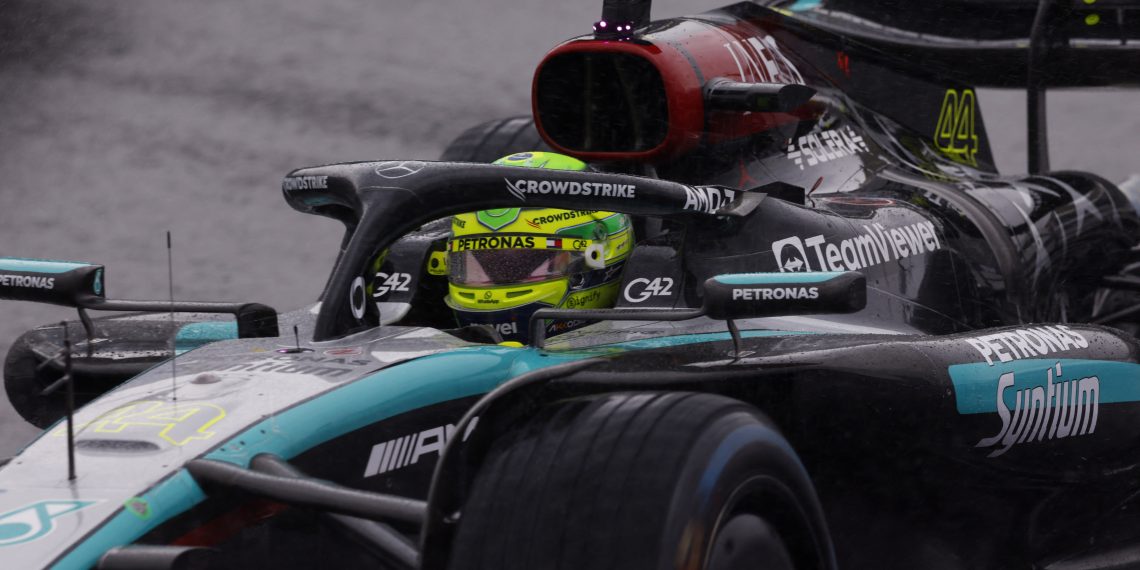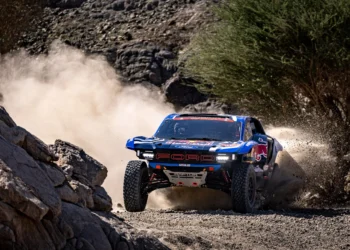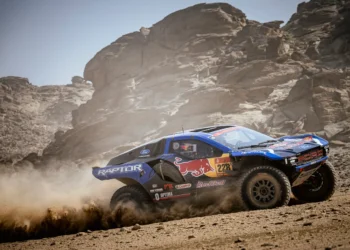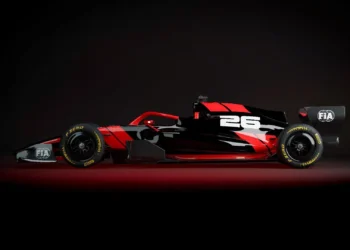F1’s Seven-Time Champ Pushes for Upgraded Wet Compounds as Rain Disrupts Qualifying in São Paulo
The recent delay of Formula 1 qualifying at São Paulo’s Interlagos circuit has reignited concerns over Pirelli’s rain tires, with Lewis Hamilton calling for an overhaul of the wet-weather compounds. Torrential rain caused standing water across the track on Saturday, ultimately forcing a delay and pushing qualifying to early Sunday morning. This disruption has highlighted issues with F1’s rain tires, as the session could not proceed safely even after extensive water-clearing efforts by marshals.
Formula 1 CEO Stefano Domenicali addressed fans during the delay, apologizing for the postponement and emphasizing safety concerns. Hamilton interrupted, lightheartedly yet pointedly telling Domenicali, “If you give us better wet tires or blankets, we’d be able to run in this. I’m putting you on the spot right now.” Hamilton’s remarks echoed the long-standing criticism from drivers that Pirelli’s wet compounds are underperforming, especially in extreme conditions.
Pirelli’s Motorsports Chief Mario Isola acknowledged the need for improvements, citing development challenges and a lack of rigorous testing on high-severity circuits. “It is true that we need to improve the performance of the wet tire to generate a proper crossover with the intermediate,” Isola explained, adding that tweaks to the tread pattern, construction, and compound are in progress. “We found an improvement. I cannot tell you if it is enough or not.”
Currently, the full wet tire is seldom favored, as Pirelli’s intermediate compound performs better in most wet conditions. However, once weather intensifies to the point where intermediates aren’t suitable, F1 cars often cannot run at all—a frustrating dynamic for both fans and drivers.
Isola defended the safety-based decision to postpone qualifying, explaining, “If it’s just performance [on the wet tire], it means that they go slower, that’s all.” But with standing water, visibility issues, and the risk of aquaplaning, safety was paramount. He pointed out that even controlled tests have proven difficult, as Mercedes’ recent wet-weather testing at Magny-Cours was limited by overly wet conditions.
To facilitate better wet tire development, Pirelli has explored alternative test sites like Fiorano and Paul Ricard, both of which are equipped with sprinklers to simulate rain. These tests aim to gather essential data, but F1’s unique racing demands mean improvements are gradual.
With the next-generation wet compounds expected next season, Hamilton’s comments spotlight the urgency for progress, as F1 grapples with the challenge of ensuring racing goes on, rain or shine.









